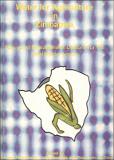| dc.contributor.author | Mazhangara, Edward P. | |
| dc.contributor.author | Kamba, Elias | |
| dc.contributor.author | Manzungu, Emmanuel | |
| dc.coverage.spatial | Zimbabwe. | en |
| dc.date.accessioned | 2016-06-27T13:29:46Z | |
| dc.date.available | 2016-06-27T13:29:46Z | |
| dc.date.issued | 2000 | |
| dc.identifier.citation | Mazhangara, E.P., Kamba, E. and Manzungu, E. (2000) Options in the furrow: differential adoption of the tied up furrow technology in Ndowoyo Communal Lands, Southeastern Zimbabwe. In: Manzungu, E., Senzanje, A. and van der Zaag, P. (eds.) Water for agriculture in Zimbabwe: policy and management options for the smallholder sector, pp. 64-77. Harare: UZ. | en |
| dc.identifier.isbn | 0-908307-63-2 | |
| dc.identifier.uri | https://opendocs.ids.ac.uk/opendocs/handle/20.500.12413/12014 | |
| dc.description | A position paper on agricultural technology for rural farming in Zimbabwe. | en |
| dc.description.abstract | The south east lowveld of Zimbabwe falls under Natural Region V. It is characterized by low and erratic rainfall which averages 400-500 mm per annum. Differences in crop production in the region are striking. Individual, parastatal estate and company estate commercial farms achieve medium to good yields of cotton, wheat, sugar cane and horticultural crops. On the other hand, are communal areas where poor yields of maize, cotton and sorghum are common. The differences between the two sectors is due to water availability, which is critical to crop production in this semi-arid part of Zimbabwe. Communal farmers mostly grow their crops rainfed as they did not benefit from the massive (mostly government) investments in irrigation infrastructure as happened in the commercial farming sector (see Mlambo and Pangeti, 1996). Good agricultural seasons occur about twice in every five years. Such is the fate of Ndowoyo Communal lands in the Save Valley where the naturally rich vertisol cannot guarantee good agricultural production. | en |
| dc.description.sponsorship | Special thanks are due to the Netherlands Organization for International Cooperation in Higher Education (NUFFIC), The Hague, for providing financial support towards the hosting of the workshop upon which this book is based. | en |
| dc.language.iso | en | en |
| dc.publisher | University of Zimbabwe (UZ) Publications | en |
| dc.rights.uri | http://creativecommons.org/licenses/by-nc-nd/3.0/ | en |
| dc.subject | Agriculture | en |
| dc.subject | Rural Development | en |
| dc.subject | Water | en |
| dc.title | Options in the furrow: differential adoption of the tied up furrow technology in Ndowoyo Communal Lands, Southeastern Zimbabwe | en |
| dc.type | Book chapter | en |
| dc.rights.holder | University of Zimbabwe (UZ) | en |


